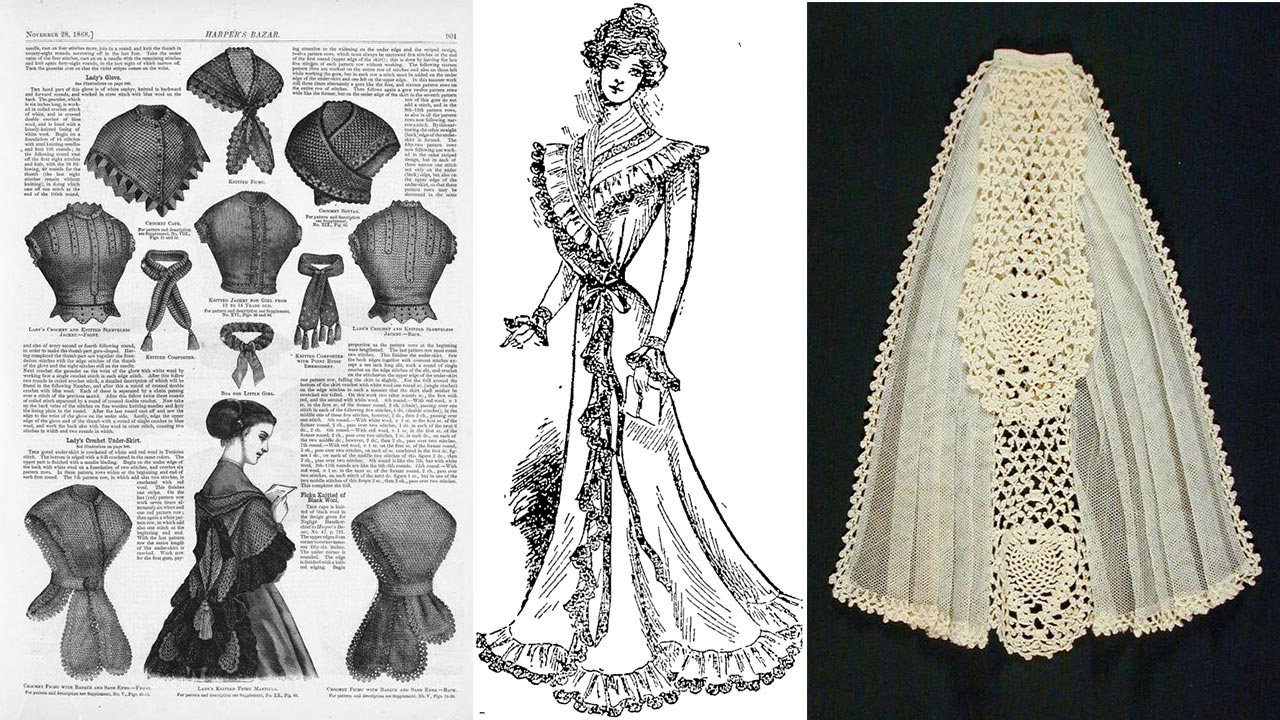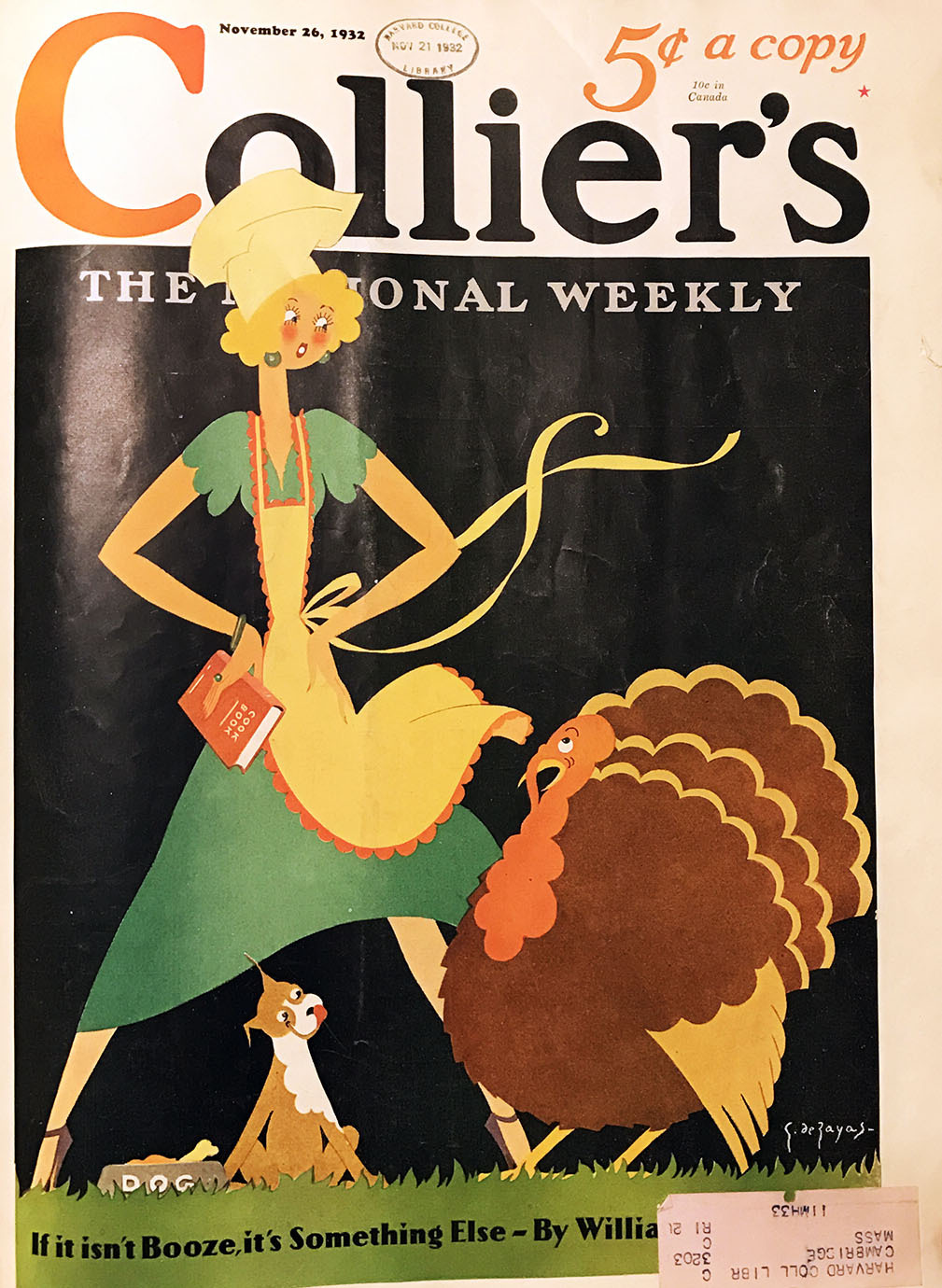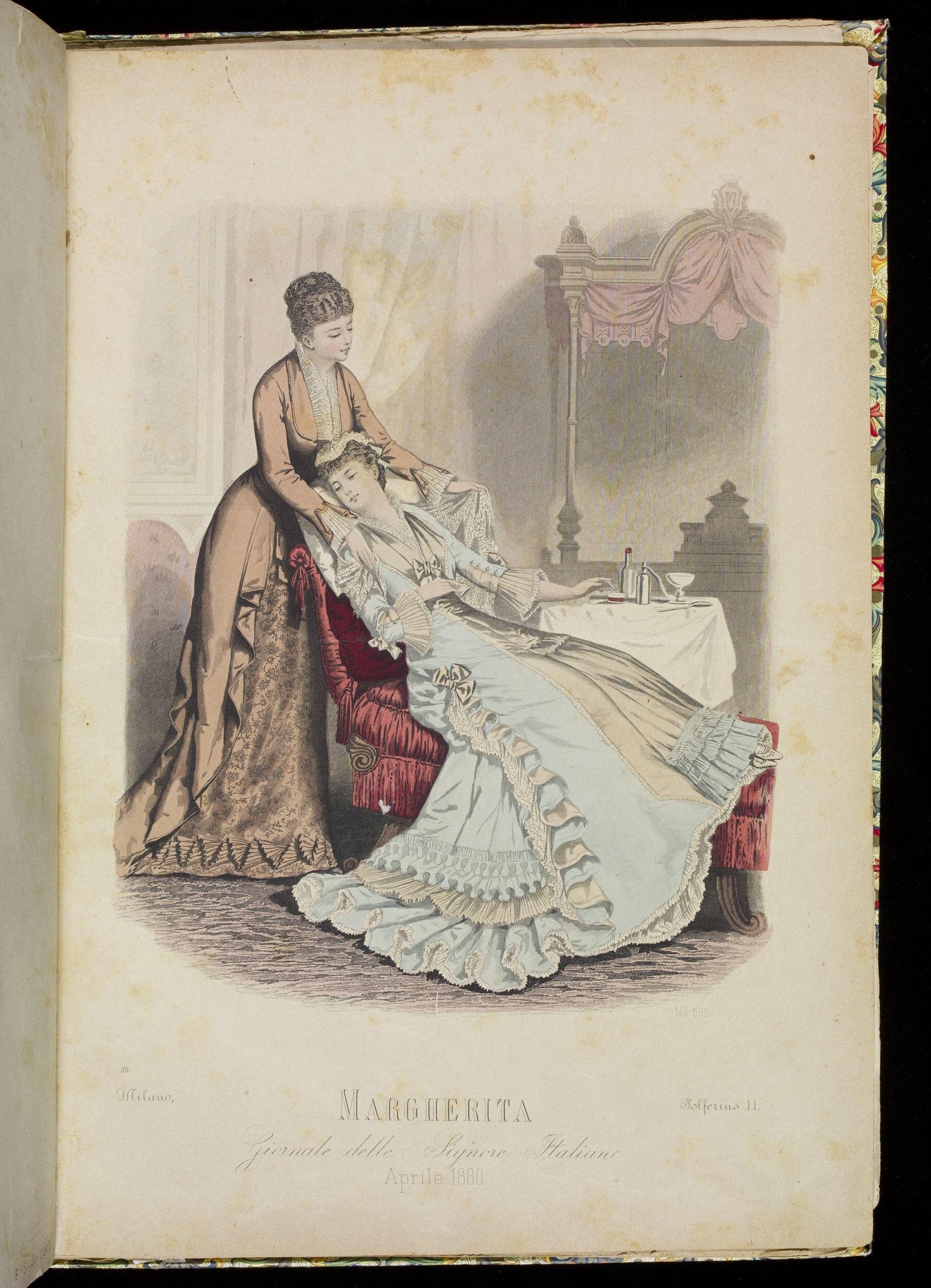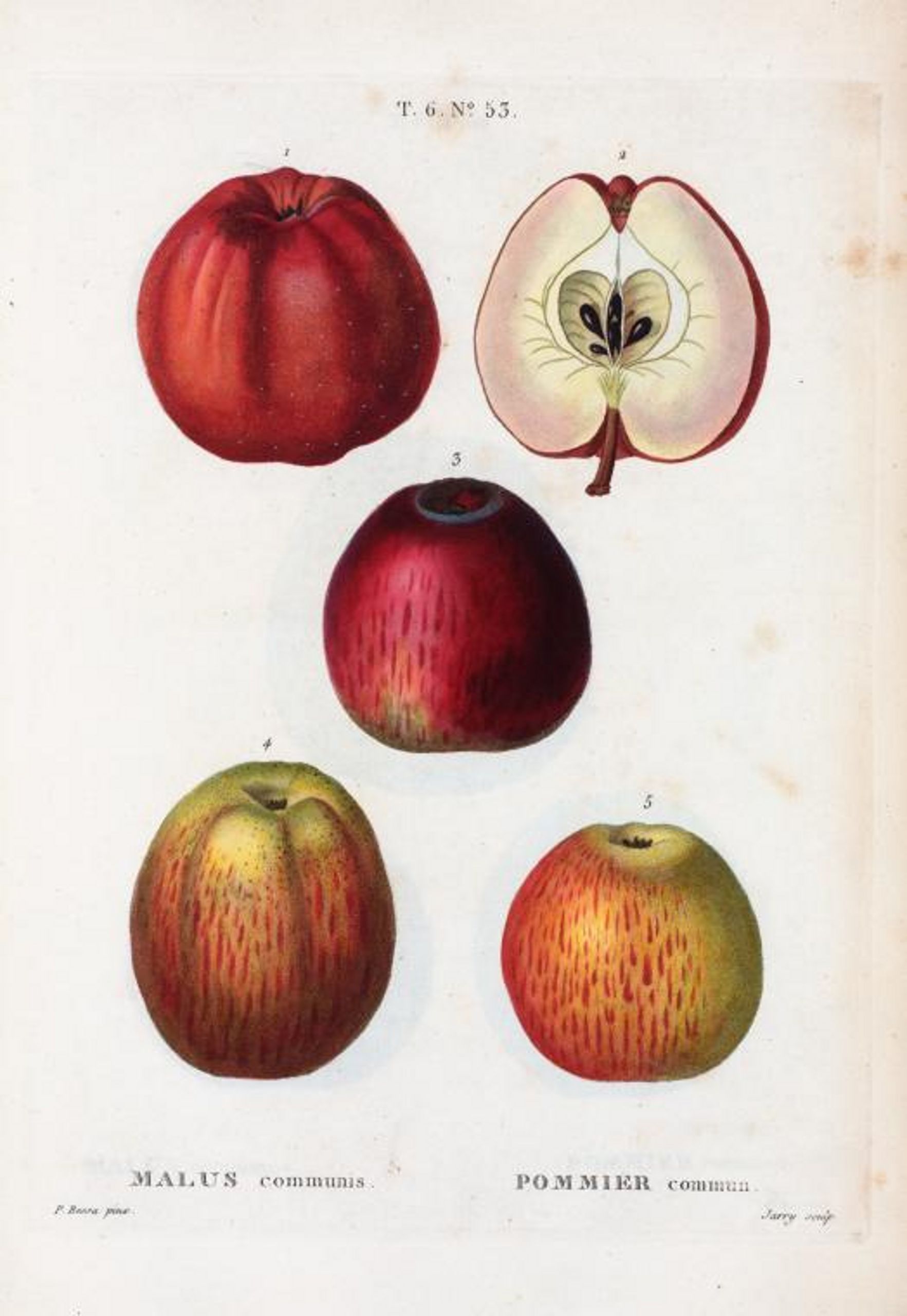by Donna Klein
Modesty and Menswear
Although the romanticism of the Regency period was still evident in fashion at the beginning of her reign, Queen Victoria soon imprinted her attitude on the culture of the era that would bear her name. The rule of the day was modesty and propriety, and fashion took its cue.
Queen Victoria made a bold fashion statement by viewing her troops at Windsor castle wearing a man’s military coat and cap during the first year of her reign. It wasn’t long before women adapted men’s ties as a fashion accessory and perhaps as an expression of independence.

Left illustration from Harper’s Bazaar, November 28, 1868;
Center illustration from the Auckland Star, August 24, 1901;
Right photo Los Angeles County Museum of Art
Jabot
The jabot first appeared during the 1650s. As a fashion accessory for men, it was designed to be partially visible through a vest. Although it wasn’t technically a tie, the frilly ruffles of the jabot were attached to each side of a man’s shirt giving it the appearance of being neckwear. It remained a popular fashion accessory for men until the 1840s. It was reinvented as a women’s fashion accessory later in the century and was often made of lace or cambric which was held in place with a brooch allowing for a measure of modesty for women of the day. By the end of the 1800s, a jabot might even be a decoration on a skirt or any part of an ensemble. Today, you will see jabots worn by some female jurists, including Ruth Bader Ginsburg on the United States Supreme Court.
Fichu
The fichu started life as a French verb meaning ‘carelessly thrown on’ and morphed over time into an English verb. It resembles a large kerchief, starting out as a square made from linen and often trimmed with lace. Occasionally, a fichu may be constructed solely of lace. It was then worn over the shoulders and tied, pinned, or tucked into the front of the bodice of a dress. Occasionally, the fichu’s points would extend to the back of the wearer. A knot or pin would then hold the points in place.It remained popular from its inception in the 18th century through the 19th century. Fichus were in and out of fashion throughout the Victorian era, and could be found in a variety of styles. They provided a layer of modesty to ladies’ garments and adapted to the norms of the day by covering the shoulders and bosom.
Resources
http://www.katetattersall.com/victorian-fashion-terms-a-m/
http://www.wisegeek.com/what-is-a-fichu.htm
http://www.speak-fashion.de/home/lets-ask-the-fashion-dictionary-whats-a-jabot
http://www.ebay.com/gds/Ascot-Jabot-or-Cravat-/10000000004637592/g.html














Leave A Comment